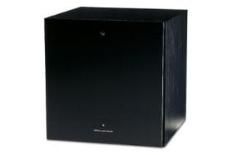After an ensemble outing in our November 2009 issue, Wharfedale's partially shiny Diamond 10.MX emerges from its position as part of the Diamond 10 HCP multi-channel speaker package and steps into the spotlight.
Should you shine a spotlight on it, though, be aware that the glossy front plate is as keen on collecting fingerprints as any of the characters on CSI.
Otherwise it's smart enough, with both speaker and line-level inputs, crossover control from 35 to 85Hz, 5V USB output should you wish to drive it wirelessly, and a choice of seven finishes.
Pounding performer
As far as multiplex action movies go, the Wharfedale delivers plenty of presence for your money.
The splendid Blu-ray transfer of Heat is meat and drink to the Diamond 10.MX – it pounds through the many gunshots and explosions with relish and vigour, delving deep down the frequency range to elicit the sort of rumble and slap that could easily provoke the neighbours.
In terms of extension and attack, the Wharfedale bears comparison to the best £300-ish subwoofers around.
Switch to the altogether trickier task (for subwoofers, at least) of reproducing music and the Wharfedale's modus operandi alters not a jot.
Handy with music too
The bassline in Kanye West's Love Lockdown is cavernously deep and enjoys decent tonal variation, too – the Diamond 10.MX is hard-hitting, but not mindlessly so.
There's a little reluctance to really attack the leading edges of fast-moving low frequency information, though, which can make the sound: a) fractionally slow; b) fractionally muddled; c) a bit of both.
Our sample also suffered from some reflex-port 'chuffing', which inhibited the volume at which it could be played – a shortcoming we haven't heard in a sub for quite some time.
But this happens only at very high volumes, and isn't a problem when playing at normal volume levels. All in all, this subwoofer has plenty to recommend it.
See all our subwoofer Best Buys

